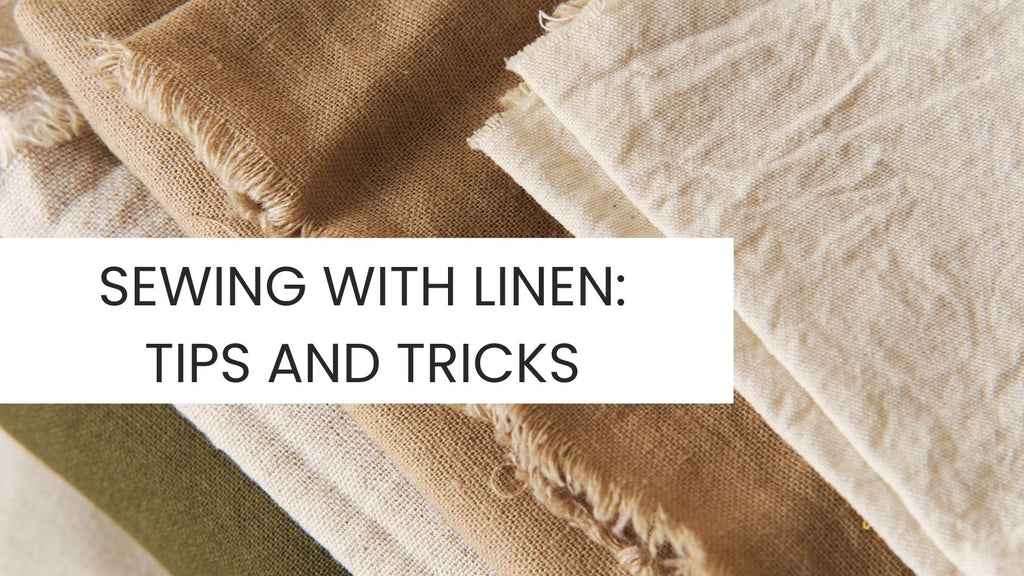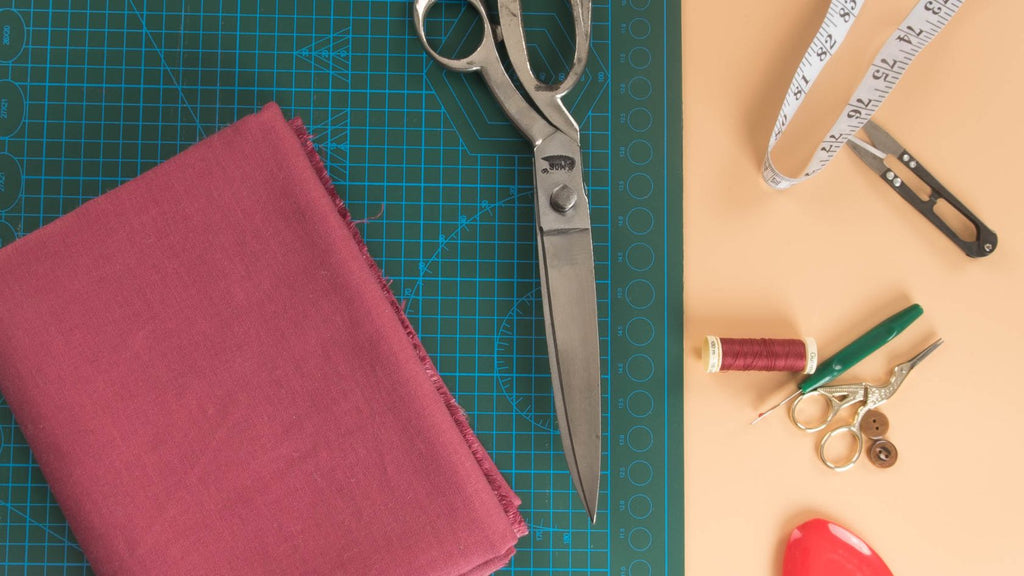The Ultimate Guide to Sewing with Linen: Tips and Tricks

Linen didn't earn its position among the elite fabrics overnight; it's been cherished for centuries for its durability and elegance. However, poorly seamed linen garments can ruin the already elegant appearance of the material. So, as a seamstress, how do you craft the best-looking garment without ruining the good reputation linen has built for ages?
What You Need To Know About Linen
Unlike cotton, linen comes from flax plant fibres, which gives it strength, breathability, and an elegant natural texture. While it wrinkles easily, it stretches and softens with each wash, giving it a superb and relaxed texture with time.
It's highly absorbent and comfortable during hot weather,
making it a preferred choice over cotton. That's to say, for the same size of cotton, you'll have to dig deeper into your pockets when buying linen.
Tips and Tricks to Work With Linen
Whether you're into delicate garments, stylish home décor items, or clothing accessories, you need a unique approach to achieve the best results. Be afraid not if you've never sewn linen; it's one of the easiest fabrics to sew. We'll guide you on how to cut and sew, plus other essential care tips and tricks when handling linen.
Pre-washing Linen

When you're set to begin your sewing project, linen needs to be pre-treated first. Pre-washing is a common pre-requisite that most seamstresses follow to ensure the material bends to their will. Normally, linen shrinks with the first few washes, so pre-washing is a trick used to lessen the shrinkage before sewing a complete garment.
While some may say it's okay to run it through warm water, hot water does a better job of reducing shrinkage. However, if the garment will always be washed in cold water, it's advisable to pre-wash it with cold water. Remember that you don't have to use detergent; just use plain water and hang it to dry.
If the fabric has care instructions with a specific pre-treatment direction, stick to that.
Cutting The Fabric

Before you start cutting, you'll find it more convenient to sew steam-pressed linen; it allows you to create clean and crisp seams. Use an iron or press cloth to press it, following the care guidelines. Another thing: use a pencil or chalk to mark up the fabric before cutting. Take note that it's got to be the tailor's white chalk or similar; otherwise, the linen might be ruined.
Finally, when it's time to cut a desired pattern, be cautious to follow the fabric's texture and weave. With some linen, you may readily know the direction to work in, but try as much as possible to follow the fabric grain as you cut. If the material is light, use a sharp tailor's scissors, but for heavy materials, a rotary cutter does the job better.
Stitching
To make your sewing work seamless, you have to choose the right needle, depending on the type of linen you're working with. The 80/12 universal needle works best with medium and heavy linens. In the case of fine linen, choose a 70/11 needle.
Before you begin stitching, make sure your sewing machine's stitch length is adjusted to around 3mm. Also, keep the tension moderately balanced, then test the stitch length on a scrap piece of linen.
You'll find linen quite pleasant to work on; it stays put, and you can secure the layers with quilt basting pins. Plus, it glides with ease over the machine feed dogs, unlike stretchy knits that need delicate handling. No rocket science is needed to choose a thread; any standard thread can get the job done.
Finishing raw seams
A professionally sewn garment has perfectly looking seams. Since linen fabric unravels at the edges, your finishing needs to be done right to avoid fraying. You can zigzag or overlock the edges. If overlock isn't an option for you, opt for French seams to give the garment a beautiful inside and outside finish.
Consider topstitching and experimenting with welt or flat felled seams to achieve a flatter finish. While these seam treatments are typically used in the manufacture of tough pants such as jeans, they also make an attractive option for linen projects.
Summing it up

Linen is an elegant fabric that if handled properly, can give the finest garment worn by the elite. If it's your first time sewing linen, these tips and tricks will guide you to perfection. Just note that you won't become an expert seamstress overnight, but with a little more practice, effort, and patience, even a novice can become an expert. One more thing to bear in mind: your new garment may feel stiff at first. That's okay; it just needs a little more time. With regular washing and wearing, it can take up to many months to years for the garment to be in its perfect wearing state.
-
Posted in
Linen Fabric, Linen Fabric Australia





